Architecture
Once overlooking a Circassian village that occupied Amman’s central valley, Darat al Funun’s houses are now situated within easy reach of the city’s bustling downtown area. At the time of their construction, around 1920, Amman was experiencing the beginning of its urban expansion; buildings were just starting to spill out of its central valley and climb up the slopes of the surrounding hills.

The houses of Darat al Funun were among the first residences erected in the area by Jordan’s prominent families. When the foundation chose them as the ideal setting for a home for the arts, the main building and its surrounding grounds were in a critical condition. From 1992 to 1995, Ammar Khammash renovated the first three buildings and their surroundings, and added a library onto the roof of the main building. In 2005, Sahel al Hiyari redesigned the upper boundary walls and the entrance, introducing modern architectural concepts to the site.
From 2011 to 2013, the Darat al Funun compound expanded significantly. A fourth historical building was renovated in 2011 by engineer Nabil Naouri to house the headquarters of The Khalid Shoman Foundation. That same year Ahmad Humeid from Syntax turned three old warehouses into a contemporary art space, named The Lab. In 2013, Naouri renovated an apartment building adjacent to The Lab to become a residence for researchers and artists, as well as a fifth historical building (Beit al Beiruti). With these last additions, the Darat al Funun compound covers today 5,196 square meters.
Jordanian, Palestinian, Syrian and Lebanese families built the houses that now form the Darat al Funun compound. They are a living memory of the history of the city of Amman and the shared history of the region. The compound is an oasis in the midst of the crowded city centre.
The Main Building
Influenced by the Venetian style, the building is representative of the Mediterranean architecture that was in fashion in cities such as Beirut, Haifa, and Jaffa in the 1920s.
Nimr Pasha al Hmoud, the mayor of Salt, a prominent Jordanian city, began construction of the main building in 1918. The two-story building served as the official residence of the British commander of the Arab Legion, Colonel F. G. Peake, until 1938. In 1921, T. E. Lawrence, better known as Lawrence of Arabia, lived at this house for three months, as referenced in Major C. S. Jarvis’s Arab Command: the biography of Lieutenant-Colonel F.G. Peake Pasha (p. 70, 83). In 1939, the building was leased to the Jordanian government and served for a short while as the Prime Minister’s office. From 1939, when Glubb Pasha became commander of the Arab Legion, until 1956, when the commandment of the Arab Legion was Arabized, the house was used as a club for British officers. In 1956, it was converted into a private school, the Arab School for Girls. The building was abandoned from 1978 until 1992, when the Shomans bought it and restoration started.
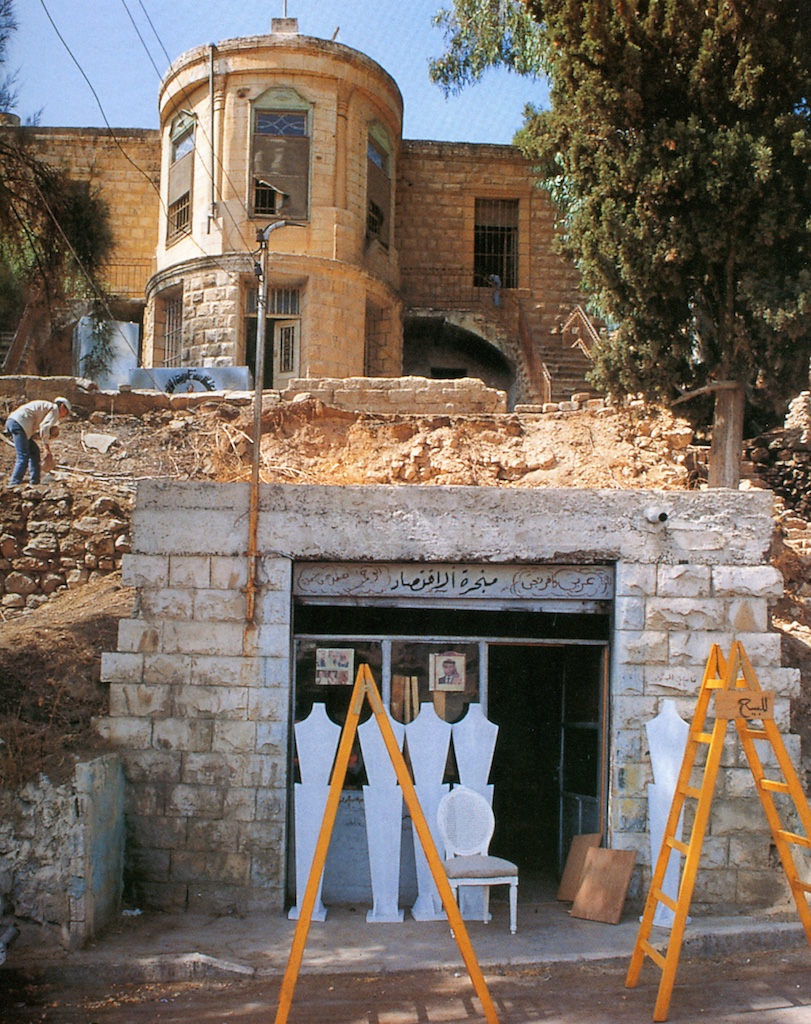
Renovation work on the main building was done under the supervision of architect Ammar Khammash. He explains that the approach was one of “minimum intervention… The stone elevations of the houses… were left untouched. They retain the marks of tools that were once held in the hands of strength and skill. In these elevations resides a hand written text, the footprints and chisels that once rang under the impact of the hammer and the identity of an individual stonemason.”
In Khammash’s restoration, “[c]hanges were limited to those, which help synchronize the new function of the buildings with their inherent qualities.” He retained the main building’s three-bay plan, transforming its interior space into three inter-connected galleries. Twin external staircases rise from the garden to a grand semicircular entrance portico.
With its limestone walls and ornamented tiled floors, the house is one of the few examples of traditional Jordanian architecture that has been conserved in Amman.
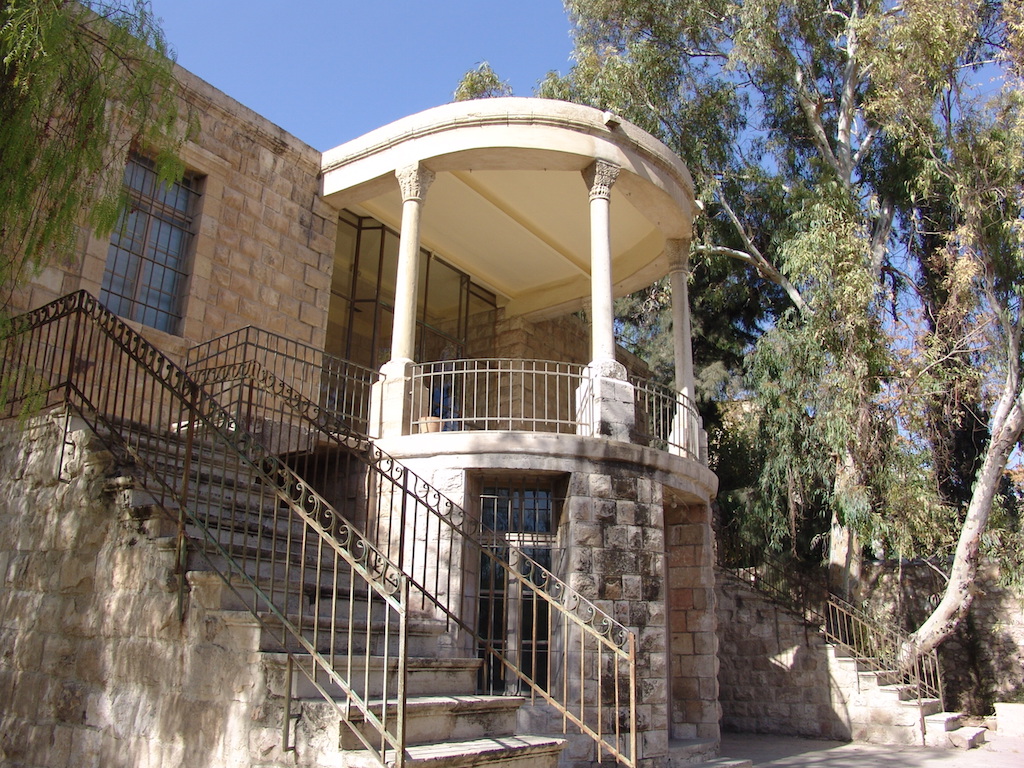
The Library
A library, with a triple vaulted ceiling reminiscent of the Umayyad desert castle of Amra, was added onto the roof of the Main Building by Khammash. He explains that “[t]he addition was built out of concrete blocks to make a clear contrast with the old parts, avoiding the use of stone which might have created an unpleasant mimicry.” At the same time, the “[c]ontrast was limited to the texture of the walls, without a great difference in colour,” allowing the new and the old to harmoniously blend together. Three of the windows from the original building were incorporated into the library; they overlook the middle exhibition hall, giving readers a view of the artworks on display.
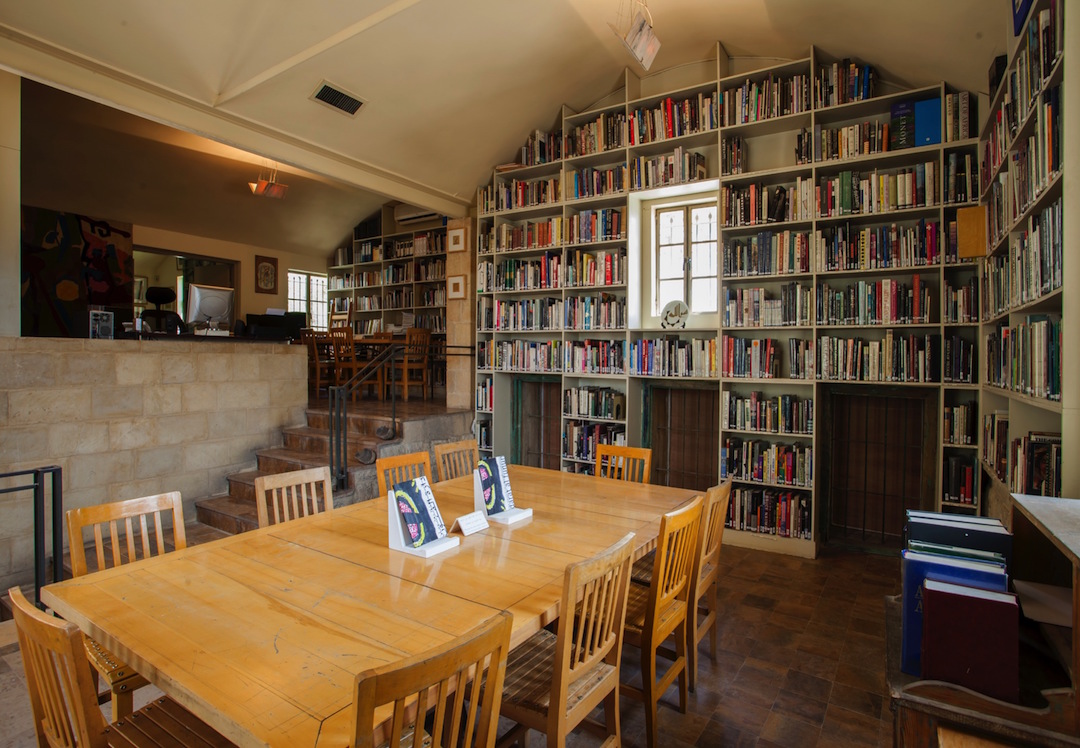
The Archaeological Site
In the Southern gardens of the Main Building lie the ruins of a 6th century Byzantine church and an old cave. Major C.R. Conder, who excavated part of the church, first identified the site in the 19th century.
At the beginning of the 20th century, R. Savignac and M. Abel recorded two inscriptions among the ruins, one of which may indicate that the church was dedicated to St. George. The other raises the possibility that the church was built over or near a Roman temple dedicated to Hercules.
Dr. Pierre Bikai, the then director of the American Center for Oriental Research (ACOR), renovated it in 1992 with the blessing of the Ministry of Tourism and Department of Antiquities.
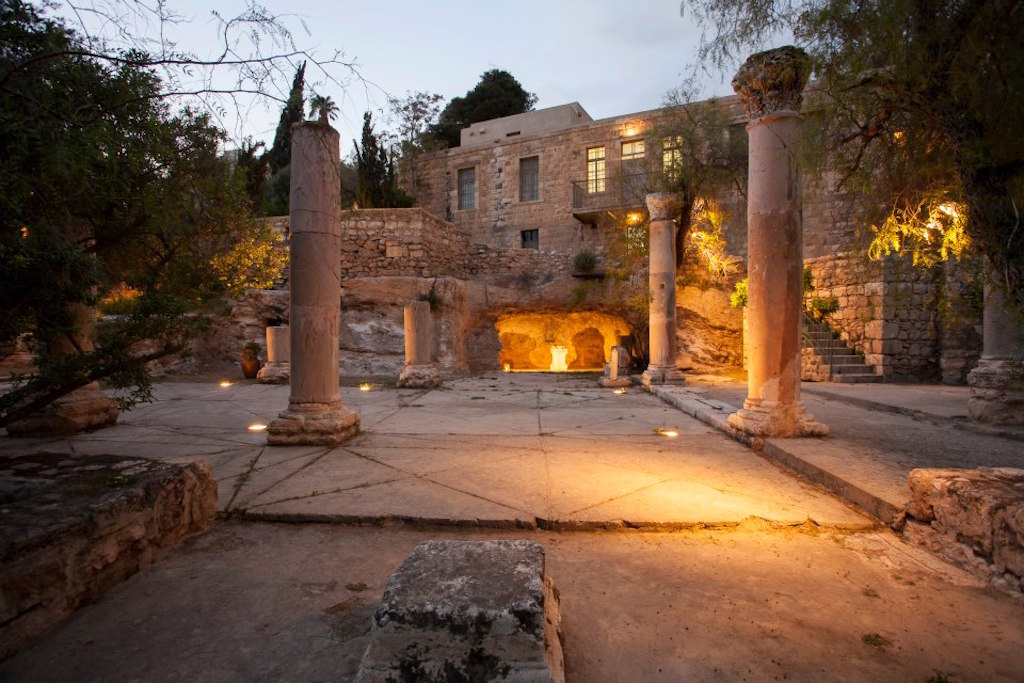
The Blue House
The Blue House was originally built by workers from Jordan’s Circassian community for Ismail Haqqi Abdo, a former governor of Akka in Palestine. In 1994, renovation work began on this house in order to create additional space for exhibitions and for screenings of films on the history of art. Khammash added a distinctively Circassian porch during the building’s restoration. The house was named after the colour of its porch, doors, and wrought iron window bars. Its front courtyard, surrounding a fountain shaded by lush trees, forms part of Darat al Funun’s café, where artists, students, and visitors meet.

Dar Khalid
The building, like the Blue House also built in the 1920s for the Abdo family, was once lived in by Sheikh Fouad al Khateeb, poet of the Great Arab Revolt and for a time advisor at the Court of King Abdullah. Later, in the mid 1950s, Prime Minister Suleiman Nabulsi inhabited it. In 1995 it was restored to serve as quarters and studios for visiting artists. In 2002, the house was dedicated to the memory and legacy of Darat al Funun’s patron Khalid Shoman and named Dar Khalid. To learn more about Khalid Shoman, please visit khalid-shoman.com.

The Façade
In 2005, architect Sahel al Hiyari designed a new front for the upper part of Darat al Funun and carried out general restoration work throughout that area of its site. He explains that “the idea behind the boundary walls and the entrance emerges from the very nature of the site itself, which in essence is a complex stratification of diverse historical layers that have their roots in ancient history and extend to the present. Such a specific context calls for an intervention that avoids a nostalgic interpretation of the site’s historical and cultural content, whereby history is reduced to a ready-made image or a stylistic exercise.”
In his intervention, Al Hiyari used a combination of stone and concrete, materials that “produce two diverse languages.” The language of stone is one of age and tradition, of careful craftsmanship and rough unevenness. That of cement is one of modernity, industry, prefabrication, and mechanized production. Yet these two distinct languages “co exist and form the cadence of that specific district in particular, and of Amman in general.” Such an approach “endorses the plurality and contrasts present within the site, thus remaining consistent with the site’s history, process of development, and function as a home for the arts.”
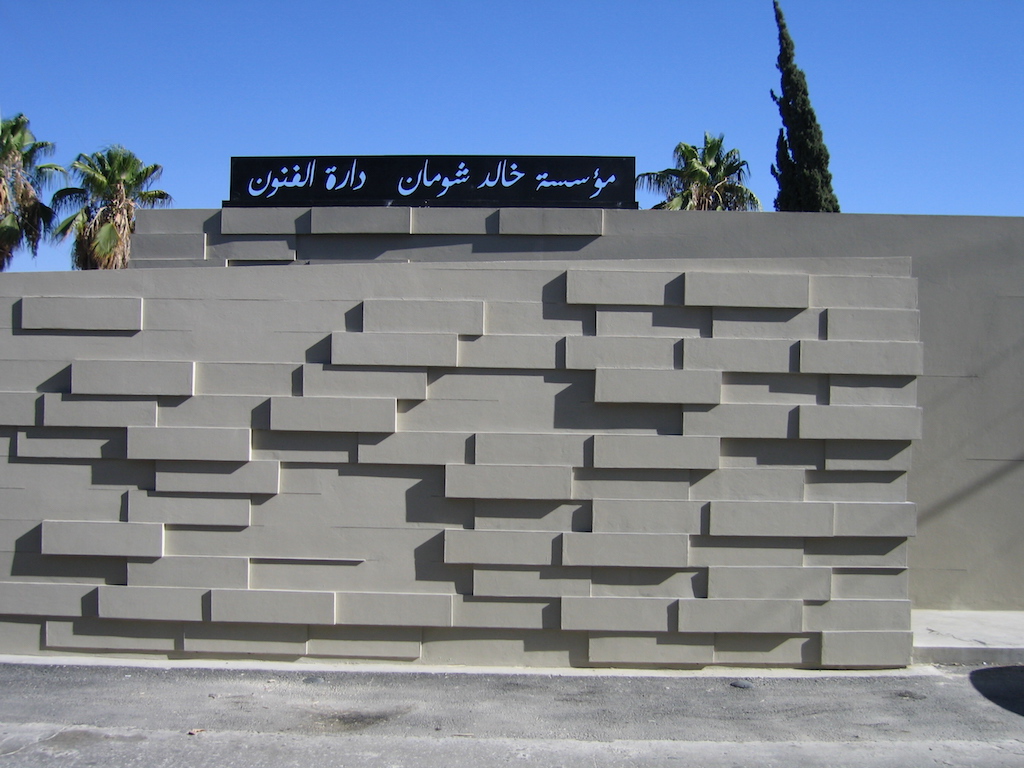
The Headquarters
A new expansion across the compound of Darat al Funun was inaugurated in 2011.
An old house built in the 1930s by Syrian Abdol Majeed Ajami was renovated to house the headquarters of The Khalid Shoman Foundation. Art works from The Khalid Shoman Collection are usually on permanent display here, and working spaces are offered for researchers studying Arab art. In keeping with our mission to be a research hub on the study of Arab art, a yearly Ph.D dissertation fellowship for the study of modern and contemporary Arab art was instated that same year.

The Lab
Also in 2011, three old warehouses on the site were turned into a white cube contemporary art space with large windows facing the street. Named The Lab, it became an experimental space and a hub for emerging artists and innovative projects.
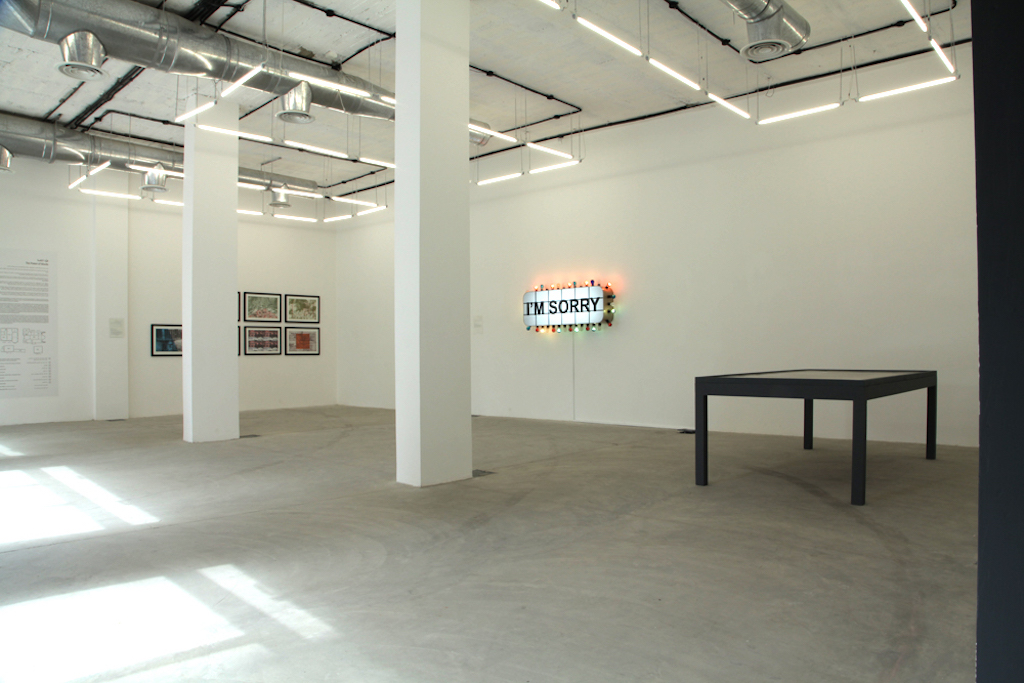
Beit al Beiruti – The Museum
Beit al Beiruti is a residential house from the 1930s that was renovated in 2013 and opened for the first time to the public for our 25th anniversary exhibition, HIWAR | Conversations in Amman. It was built by the Lebanese Abdul Hafith Itani al Beiruti (who was called al Beiruti in reference to the city he came from).
The house with its distinctive arches is a unique example in Amman of the city of Beirut’s architecture. Queen Zein, mother of King Hussein, lived in the house in the 1930s.
In 2018, we concluded our 30th anniversary celebrations by inaugurating at the Beit al Beiruti “The Museum: Art Architecture Archaeology”, which embodies our 30 year long journey in support of contemporary arts and artists from the Arab world, and our contribution to preserving Jordan’s architectural and cultural heritage.
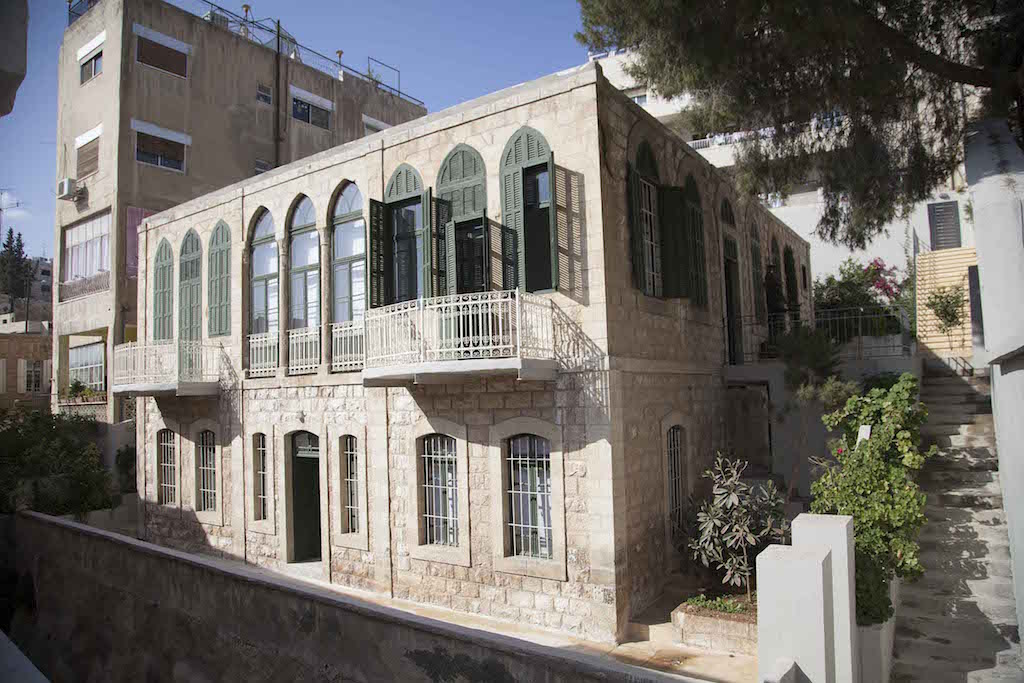
The Residency Building
Built in the 1940s on the lower grounds of the Beit al Beiruti, the Residency Building was constructed by architect Sharif Fawaz Muhanna.

From the publication Darat al Funun: Art, Architecture, Archaeology, 1997.